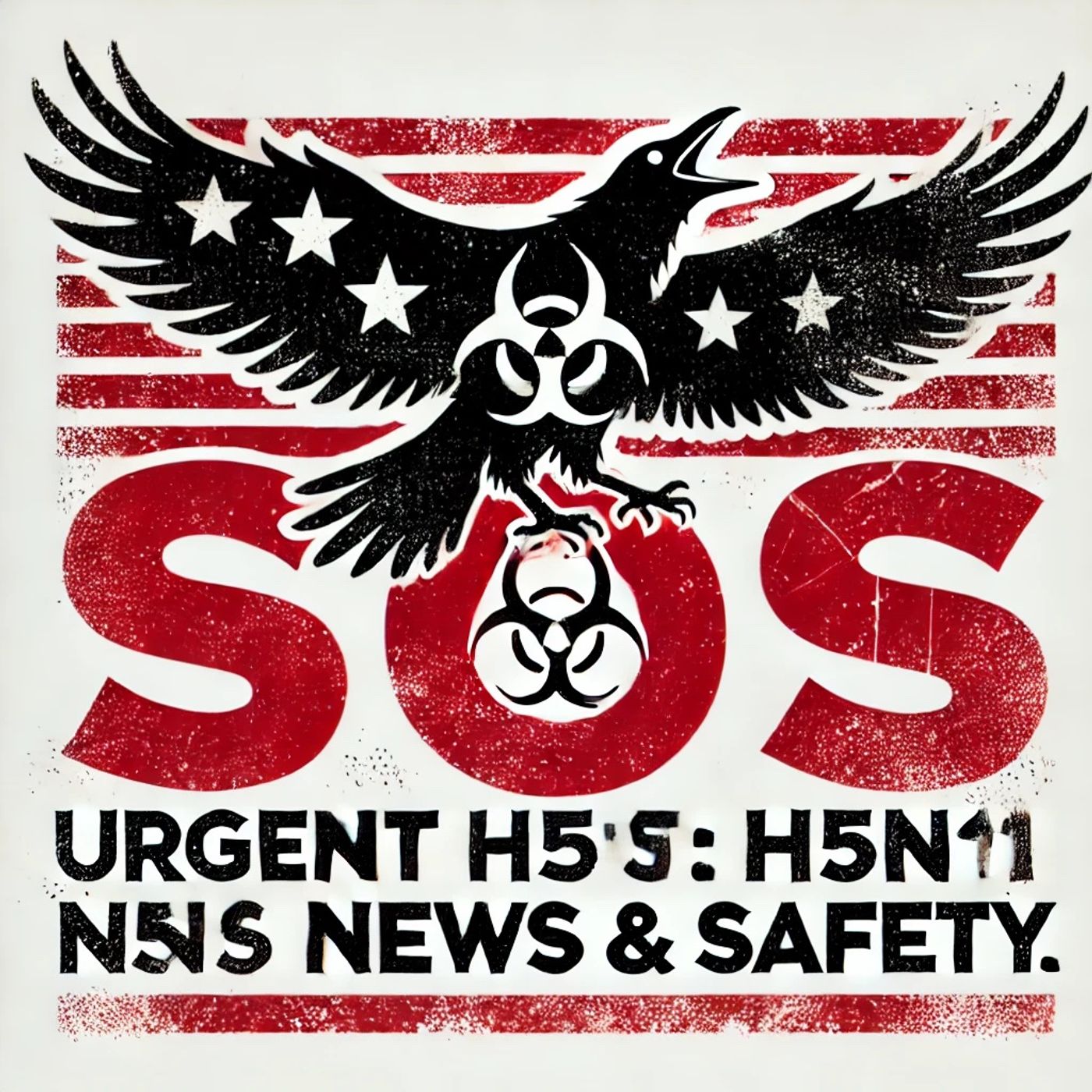Podcast Episode Details
Back to Podcast Episodes
H5N1 Bird Flu Outbreak Expands Across US Dairy Herds and Wildlife Sparking Concerns Over Animal and Human Health
This is Bird Flu SOS: Urgent H5N1 News and Safety. I’m your host. Today is August 16, 2025, and we are breaking into our regular programming due to a significant escalation in the ongoing H5N1 bird flu crisis.
In just the last week, the California Department of Food and Agriculture confirmed 43 new cases of H5N1 bird flu in dairy herds that had previously tested negative and been released from quarantine. These repeat outbreaks have resulted in state-wide re-quarantines, underscoring the virus’s persistence and the challenge of containing it. According to the American Medical Association, this current global wave is marked by the rapid spread of a highly pathogenic H5N1 strain across poultry, dairy cattle, and now multiple wild and domestic animal species.
Nationally, Weld County, Colorado has become the center of a multi-species outbreak. Research there demonstrates that H5N1 is spreading not only among birds and cattle but also to cats, raccoons, and even humans. Ten human cases have been confirmed in farm workers around this region in recent weeks, according to CDC reports. Dr. Anne Schuchat, a senior CDC official, states, “This is the most complex and challenging H5N1 situation the US has faced, requiring intensive surveillance and rapid reporting to prevent further spread.”
Globally, there have been 26 human infections with avian influenza A(H5N1) this year, with 11 fatalities, most of them tracing directly to contact with sick or dead poultry. Nearly every recent human infection in the US has been linked to work exposure in affected farms. The CDC and state health departments emphasize that person-to-person transmission has NOT been documented in these US cases, and the risk to the general public remains low. However, health authorities are urging heightened awareness and strict adherence to safety measures for those in affected areas.
Here’s what you need to do if you’re in or near an outbreak zone:
Do NOT handle sick or dead birds, cattle, or other animals. Avoid exposure to animal waste.
Report any unexplained animal deaths or clusters of sick poultry or livestock to your state’s agriculture or health department immediately.
If you work with livestock or poultry, wear the recommended personal protective equipment at all times. Wash hands thoroughly after any contact with animals, feed, or surfaces.
If you develop a fever, cough, sore throat, or unexplained conjunctivitis and have been in contact with farm animals in the past 10 days, seek medical care right away and inform your provider about your exposure. Early antiviral treatment is more effective.
Warning signs needing urgent response include rapid-onset high fever, shortness of breath, confusion, or persistent vomiting after animal exposure. Do not ignore these symptoms—contact your healthcare provider or emergency services promptly.
For the latest updates, check your state health department websites, the CDC online portal, or the USDA animal health hotlines.
While the situation is evolving rapidly and public health authorities are racing to contain new outbreaks, experts stress that the general public’s risk remains low if you avoid exposure and follow official guidance. Stay informed but don’t panic; vigilance and quick action save lives.
Thank you for tuning in to Bird Flu SOS from Quiet Please. Come back next week for more vital updates. This has been a Quiet Please production. For more, check out Quiet Please Dot A I. Stay safe.
For more http://www.quietplease.ai
Get the best deals https://amzn.to/3ODvOta
Published on 1 week ago